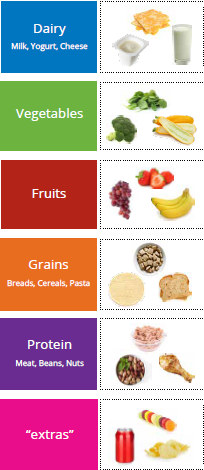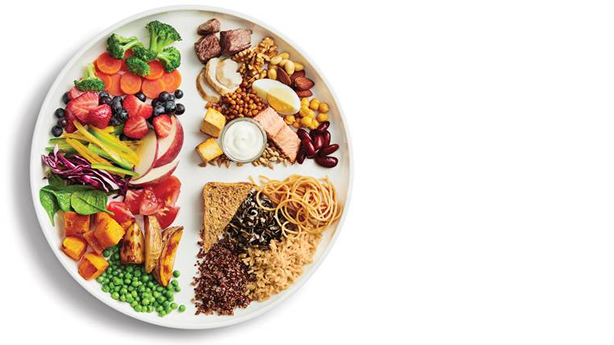What Are Some Healthy Foods to Eat on a Diet? Some healthy foods to eat on a diet include leafy greens, lean proteins, whole grains, and fresh fruits. These foods provide essential nutrients while keeping calorie intake low.
Choosing the right foods can make or break a diet. Leafy greens like spinach and kale are low in calories but high in vitamins and minerals. Lean proteins such as chicken breast, turkey, and fish help build muscle and keep you full longer.
Whole grains like quinoa, brown rice, and oats offer fiber and sustained energy. Fresh fruits provide natural sugars and antioxidants, making them perfect for satisfying sweet cravings healthily. Incorporating these foods into your meals can help you achieve your weight loss goals while maintaining overall health and well-being. Eating right doesn’t have to be difficult or boring.
Introduction To Diet And Nutrition
What Are Some Healthy Foods to Eat on a Diet? Eating healthy is very important. It helps you feel good and stay strong. Knowing what to eat can help you reach your diet goals. A good diet has many different foods. This helps you get all the nutrients you need.
The Importance Of Balanced Eating
What Are Some Healthy Foods to Eat on a Diet? Balanced eating means eating different kinds of foods. This includes fruits, vegetables, proteins, and grains. Each type of food gives you different vitamins and minerals. These are very important for your body.
A balanced diet helps you stay fit. It also helps you avoid getting sick. Eating too much of one kind of food can be bad. For example, too much sugar can make you gain weight. Too much salt can raise your blood pressure.
Here are some tips for balanced eating:
- Eat more fruits and vegetables.
- Choose whole grains instead of white bread.
- Include lean proteins like chicken and fish.
- Drink plenty of water every day.
Setting Realistic Dietary Goals
It’s important to set goals that you can reach. Small changes are easier to keep. Start with one or two changes. For example, eat an apple instead of chips. Drink water instead of soda.
Write down your goals. This can help you stay on track. Check your progress every week. Celebrate your successes. If you make a mistake, don’t give up. Just try again.
Here is a simple plan:
| Week | Goal |
|---|---|
| 1 | Eat a fruit with every meal. |
| 2 | Replace one sugary drink with water. |
| 3 | Try a new vegetable each week. |
Fruits: Nature’s Sweet Treats
Fruits are delicious and healthy choices for any diet. They provide essential vitamins, minerals, and fiber. Fruits also satisfy your sweet cravings naturally. Let’s explore some of the best fruits to include in your diet.
Berries: Antioxidant Powerhouses
Berries are small but mighty. They are packed with antioxidants. Antioxidants help protect your body from damage.
- Blueberries: These tiny berries are rich in vitamins C and K.
- Strawberries: High in vitamin C and manganese.
- Raspberries: A good source of fiber and antioxidants.
Include a variety of berries in your diet for the best benefits.
Citrus Fruits: Vitamin C Galore
Citrus fruits are famous for their vitamin C content. Vitamin C is crucial for a healthy immune system. It also helps in collagen production.
- Oranges: A single orange can provide your daily vitamin C needs.
- Lemons: Great for adding flavor and vitamin C to your water.
- Grapefruits: High in vitamins A and C.
Citrus fruits also have a refreshing taste. They are perfect for any time of the day.
Vegetables: The Fiber Champions
Vegetables are the champions of fiber. They are essential for a healthy diet. Fiber keeps your digestive system healthy and helps you feel full. Let’s explore some fiber-rich vegetables that can boost your diet.
Leafy Greens: Loaded With Vitamins
Leafy greens are rich in vitamins A, C, and K. They are also low in calories, making them perfect for weight loss.
- Spinach: High in iron and calcium.
- Kale: Packed with antioxidants and fiber.
- Swiss Chard: Contains essential minerals and vitamins.
Including leafy greens in your diet can improve your overall health. They are versatile and can be added to salads, smoothies, or cooked dishes.
Cruciferous Vegetables: Cancer-fighting Properties
Cruciferous vegetables are known for their cancer-fighting properties. They contain compounds that help detoxify the body.
- Broccoli: Rich in vitamins and fiber.
- Cauliflower: Contains antioxidants and aids digestion.
- Brussels Sprouts: High in vitamins C and K.
These vegetables are great for boosting your immune system. You can steam, roast, or stir-fry them for delicious meals.
| Vegetable | Main Nutrients | Health Benefits |
|---|---|---|
| Spinach | Iron, Calcium | Strengthens bones, improves muscle function |
| Broccoli | Fiber, Vitamins C and K | Boosts immunity, aids digestion |
| Kale | Antioxidants, Fiber | Reduces inflammation, supports heart health |
Adding these vegetables to your diet can help you stay healthy. They are easy to prepare and packed with nutrients.
Whole Grains: The Heart Of A Healthy Diet
Whole grains are essential for a balanced diet. They are packed with nutrients like fiber, protein, and vitamins. These grains help keep you full longer and provide sustained energy. Incorporating whole grains into your meals can improve your overall health. Let’s explore some of the best whole grains to include in your diet.
Quinoa: A Complete Protein Source
Quinoa is a versatile grain rich in protein. It contains all nine essential amino acids, making it a complete protein source. Quinoa is also high in fiber, which aids digestion and keeps you full.
- High in protein and fiber
- Contains essential amino acids
- Gluten-free and easy to cook
Use quinoa in salads, soups, or as a side dish. It pairs well with vegetables and lean proteins.
Oats: For A Heart-healthy Breakfast
Oats are perfect for starting your day. They are rich in beta-glucan, a type of fiber that lowers cholesterol. Oats also provide essential vitamins and minerals like manganese, phosphorus, and magnesium.
| Nutrient | Amount per 100g |
|---|---|
| Fiber | 10.6g |
| Protein | 16.9g |
| Magnesium | 270mg |
Enjoy oats in various ways. Make oatmeal, overnight oats, or add them to smoothies. They are simple to prepare and very nutritious.
Lean Proteins: Building Blocks Of Muscle
Lean proteins are essential for muscle growth and repair. They provide the necessary building blocks, known as amino acids, that help maintain and build muscle mass. Including lean proteins in your diet can also help with weight loss, as they are low in fat and calories but high in nutrients.
Fish: Omega-3 Rich Choices
Fish is an excellent source of lean protein and is rich in Omega-3 fatty acids. These fatty acids help reduce inflammation and improve heart health. Here are some fish options to include in your diet:
- Salmon: High in protein and Omega-3s.
- Tuna: Low in fat and versatile in recipes.
- Trout: Contains essential vitamins and minerals.
Poultry: Low-fat Protein Options
Poultry, like chicken and turkey, offers lean protein with minimal fat. These options are versatile and can be cooked in various ways to keep your meals interesting.
- Chicken Breast: High in protein and low in fat.
- Turkey Breast: Great for sandwiches and salads.
- Lean Ground Chicken: Perfect for burgers and meatballs.

Credit: www.healthyeating.org
Healthy Fats: Essential For Body Functions
Healthy fats are vital for our bodies. They help in various functions. These include brain health, hormone production, and energy storage. Unlike unhealthy fats, they do not clog arteries. Instead, they promote heart health and reduce inflammation. Adding healthy fats to your diet can improve your overall well-being.
Avocados: More Than Just Healthy Fat
Avocados are a superfood. They are rich in monounsaturated fats. These fats are good for your heart. Avocados also have fiber, vitamins, and minerals. They help you feel full and satisfied.
Here is a simple table showing the nutrients in avocados:
| Nutrient | Amount per 100g |
|---|---|
| Calories | 160 |
| Monounsaturated Fat | 10g |
| Fiber | 7g |
| Vitamin K | 26% DV |
Include avocados in your diet. You can add them to salads, sandwiches, or smoothies.
Nuts And Seeds: Nutrient-dense Snacks
Nuts and seeds are excellent sources of healthy fats. They are also packed with protein and fiber. These snacks are nutrient-dense and easy to carry. Perfect for on-the-go snacking.
Here are some popular nuts and seeds:
- Almonds: High in Vitamin E and magnesium.
- Walnuts: Good for brain health and omega-3 fatty acids.
- Chia Seeds: Rich in fiber and antioxidants.
- Flaxseeds: Great source of omega-3 and lignans.
Eating a variety of nuts and seeds can benefit your health. They help in weight management and provide essential nutrients.
Remember to eat them in moderation. A small handful a day is enough.
Legumes: The Plant-based Protein Powerhouses
Legumes are a great addition to any diet. They are rich in protein and fiber. They can help with weight loss and improve health. Legumes include lentils, beans, and chickpeas. They are versatile and can be used in many dishes. Let’s explore some popular legumes and their benefits.
Lentils: Versatile In Any Diet
Lentils are small, but they pack a punch. They are rich in protein and fiber. Lentils come in various colors like green, red, and brown. Each type has its unique taste and texture.
Lentils are easy to cook. They can be added to soups, stews, and salads. They can also be used to make vegetarian burgers. Below is a table showing the nutritional values of 100 grams of cooked lentils:
| Nutrient | Amount |
|---|---|
| Calories | 116 kcal |
| Protein | 9 grams |
| Fiber | 8 grams |
| Iron | 3.3 mg |
Beans: High In Fiber And Protein
Beans are another excellent choice for a healthy diet. They are high in fiber and protein. There are many types of beans such as black beans, kidney beans, and chickpeas. Each type offers unique health benefits.
Beans can be used in many dishes. They are great in soups, salads, and as side dishes. Beans can also be used to make dips like hummus. Here is an unordered list of common beans and their benefits:
- Black Beans: Rich in antioxidants
- Kidney Beans: Good for heart health
- Chickpeas: Great for bone health
Hydration: The Cornerstone Of Health
Staying hydrated is vital for overall health. Proper hydration aids digestion, improves skin health, and boosts energy levels. Drinking enough fluids supports all bodily functions. Here are some healthy hydration options.
Water: The Ultimate Thirst Quencher
Water is the best drink for staying hydrated. It has zero calories and helps keep your body functioning well. Drinking water before meals can also help control appetite. Aim for at least eight glasses of water a day.
Consider these tips to increase your water intake:
- Carry a reusable water bottle.
- Infuse your water with fruits like lemon or berries.
- Set reminders to drink water throughout the day.
Herbal Teas: Calming And Nutritious
Herbal teas are another excellent hydration choice. They are caffeine-free and come in various flavors. Herbal teas can help with relaxation and provide antioxidants. Popular options include chamomile, peppermint, and ginger tea.
| Type of Herbal Tea | Benefits |
|---|---|
| Chamomile | Calms nerves and aids sleep |
| Peppermint | Soothes digestion |
| Ginger | Reduces nausea and inflammation |
Enjoy herbal teas warm or iced. They can be a delicious way to stay hydrated and support your health.
Putting It All Together: Meal Planning Tips
Planning meals can be tricky while on a diet. But with the right tips, you can enjoy tasty and healthy foods. This section will help you understand how to create balanced meals, control portions, and eat mindfully.
Creating Balanced Meals
What Are Some Healthy Foods to Eat on a Diet? Balanced meals keep you full and satisfied. They also provide the nutrients your body needs. Here are some tips to create balanced meals:
- Include lean proteins like chicken, fish, or tofu.
- Choose whole grains such as brown rice, quinoa, or whole-wheat pasta.
- Add plenty of vegetables for vitamins and minerals.
- Use healthy fats like avocado, olive oil, or nuts.
Here is a simple table to help you plan balanced meals:
| Meal Component | Examples |
|---|---|
| Lean Proteins | Chicken, Fish, Tofu |
| Whole Grains | Brown Rice, Quinoa, Whole-Wheat Pasta |
| Vegetables | Broccoli, Spinach, Carrots |
| Healthy Fats | Avocado, Olive Oil, Nuts |
Portion Control: Eating Mindfully
Portion control helps you avoid overeating. Here are some tips for eating mindfully:
- Use smaller plates to control portion sizes.
- Eat slowly and savor each bite.
- Stop eating when you feel full.
- Avoid distractions like TV or smartphones while eating.
Here are some visual cues to help with portion control:
- A serving of meat should be the size of your palm.
- A serving of grains should be the size of your fist.
- A serving of fats should be the size of your thumb.
Remember, eating mindfully can make your diet more enjoyable.

Credit: www.healthline.com

Credit: www.pinterest.com
Frequently Asked Questions
What Foods Are Good For Losing Weight?
Foods good for losing weight include lean proteins, vegetables, fruits, whole grains, and healthy fats. Drink plenty of water.
What Foods Are Healthy To Eat On A Diet Plan?
Leafy greens, lean proteins, whole grains, fruits, and nuts are healthy foods for a diet plan. Avoid processed foods. Drink plenty of water. Choose healthy fats like avocado and olive oil. Eat in moderation for balanced nutrition.
What Are The 5 Super Foods For Weight Loss?
The 5 superfoods for weight loss are: 1. Avocados 2. Berries 3. Leafy greens 4. Salmon 5. Quinoa These foods boost metabolism, provide nutrients, and keep you full longer.
What Are Some Healthy Meals For Weight Loss?
Some healthy meals for weight loss include grilled chicken salad, quinoa with vegetables, baked salmon, and vegetable stir-fry.
Conclusion
Choosing healthy foods is essential for a successful diet. Incorporate fruits, vegetables, lean proteins, and whole grains. These nutrient-dense options support weight loss and overall health. Remember to stay hydrated and enjoy balanced meals. By making smart choices, you can achieve your dietary goals and maintain a healthy lifestyle.




Leave a Reply